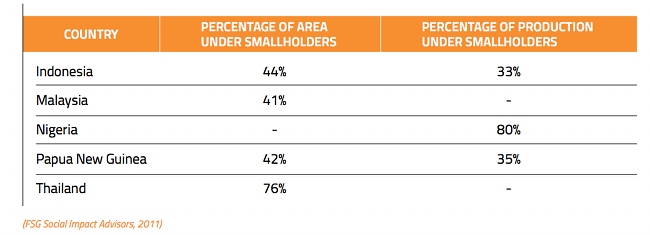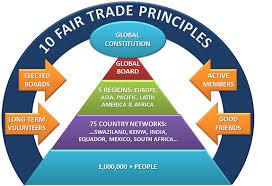Upcycling Gets Famous With New Reality Show Series


One might assume that handling trash every day for a living might be a smelly job. But for the crew of designers, nerds and Captain Planet-pushers at upcycling firm TerraCycle, trash is a profitable problem that keeps on giving.
On August 8, PivotTV viewers will get a sneak peak inside the world of TerraCycle’s upcycling empire when its original, unscripted docu-comedy series “Human Resources” kicks off for a 10-episode run.
"Human Resources" follows the wacky, fast-paced work environment of the TerraCylce team as they come up with solutions to eliminate the concept of waste. The mash-up of eclectic personalities run the gamut as they bend the rules of corporate America, perform rain dances in the middle of the work day, break for early-morning yoga in the conference room and share kale chips with their in-office pets.
With more than 120 employees in several cities around the world, Tom Szaky, CEO and founder of TerraCycle, encourages both mischief and antics among his lively staff of eco-geeks, scientists and the occasional apathetic employee.
There’s Albe Zakes, VP of Global Marketing and Communications, who worked his way up the recycled ladder as an intern eight years ago, labels himself as a “wears all hats” employees and is credited as a major reason why the company doesn’t spend money on advertising. Tiffany Threadgould serves as the Chief Deign Junkie who rocks themed costumes to work with her Pomeranian in tow. Tick Zultner is the scientist who provides backbone for the business, and Dean Innocenzi is the firm’s graphic designer and resident graffiti artist who drops beats while tagging TerraCycle’s headquarters.
Though TerraCycle HQ might resemble that of popular hit television series “The Office," the New Jersey-based company is much more than a mixed bag of do-gooders. Unequivocally, TerraCycle has been a world leader in collecting and repurposing non-recyclable, post-consumer waste for over a decade.
“TerraCycle is a remarkable and pioneering company, but it’s also a quirky workplace with its own unreasonable bosses, inscrutable co-workers, and often bizarre staff meetings… making it the perfect setting for a great TV show. Amidst the fun of the office, the show offers great takeaway on the science behind their innovations,” said Belisa Balaban, executive vice president of Original Programming for PivotTV, in a press statement.
In a recent article penned by Szaky on TreeHugger, he writes:
“For those unfamiliar with TerraCycle’s business model, we collect waste that can’t typically be recycled by your local municipality, and then recycle or upcycle that material into useful products. You receive points for your collected waste, which can then be turned into monetary donations for the charity of your choice […].Human Resources viewers will be able to see that it’s possible to recycle almost anything, and the show will include PSAs and commercials to create awareness around proper recycling techniques. TerraCycle and RAA show people how to recycle more effectively, while Pivot TV provides the platform, the reach, and the ability to get this valuable information to millions of consumers.”
Stay tuned for the premiere on August 8 at 10:30 p.m. ET/7:30 p.m. PT. Episode one, Talkin’ Trash, follows the team as they get close to finalizing a deal for a coffee table book of DIY upcycling ideas but are still in need of a sample chapter. In preparation for a meeting with the publisher, Albe asks Dean to work on being more professional.
Image courtesy of TerraCycle Facebook
MillerCoors Cuts Water and Energy Use, Pilots Sustainable Barley Farming


Next time you reach for a MillerCoors brew, you can rest assured that the company is doing its part to be environmentally sustainable.
The company has greatly reduced its water and energy usage, according to its latest sustainability report. From 2012 to 2013, MillerCoors reduced the barrels of water it takes to brew one barrel of beer by 9.1 percent. The second largest brewer in the U.S., the company also slashed energy use by 15.6 percent from 2012, saving 1.6 billion mega joules of energy last year. MillerCoors has eight major breweries, and all of them reduced energy use.
Water is a big part of brewing beer, so reducing its usage is not an easy feat for any brewery. From 2011 to 2013, MillerCoors saved over 1.1 billion gallons of water. That’s enough water to fill 1,783 Olympic-size swimming pools or meet the needs of more than 11,500 average American households for a year. One of the ways it achieved the water savings is by converting its Fort Worth Brewery from steam heating to a pasteurizer reclaim system, which uses recirculated water instead of fresh, incoming water to cool beer after pasteurization. It also installed water reclamation systems in six of its eight major breweries, which saves tens of millions of gallons of water a year.
MillerCoors’ water conservation efforts are being recognized. Its Irwindale Brewery received the Water Stewardship Award from the Irwindale Chamber of Commerce for its water conservation work. That work included converting 50 percent of the brewery turf to Dryscape which reduces water use by over 15 million gallons a year. In other breweries, the company has implemented tertiary water reuse systems, which use effluent water (treated water) for specific uses in non-production areas. Its breweries in Albany, Georgia and Eden, North Carolina have tertiary water reclamation systems for their cooling towers.
The beer-maker also recently teamed up with The Nature Conservancy to build its Showcase Barley Farm in Idaho’s Silver Creek Valley to pilot new and more sustainable farming techniques. The farm saved more than 429.5 million gallons of water over the last three years.
MillerCoors created a similar program on its farm in Colorado’s San Luis Valley. Farms in the area rely on aquifers for irrigation, and they have been declining over the past 44 years and are now at record lows. The company conducted a grower survey to determine which practices would best serve the Valley’s farms. One of the best practices reviewed was shutting off end guns, the sprinkle nozzles at the end of watering arms. Shutting them off saves 100 to 200 gallons of water per minute. Replacing the nozzles with more efficient ones was another practiced reviewed. Additionally, the company is now conducting research to find new varieties of barley that need less water.
Other key takeaways from the report included reductions in greenhouse gas emissions, waste and product packaging. From 2012 to 2013, the company reduced its GHG emissions by 14 percent. Its Golden Brewery, the largest single-site brewery in the U.S., reduced carbon emissions by 28 percent over the last year. Meanwhile, the company's Shenandoah Brewery reduced carbon emissions by 15 percent in the same time frame.
In 2013, two breweries, the MillerCoors Albany and Golden breweries, achieved landfill-free status by reusing or recycling over 99 percent of waste produced. A total of six of its eight breweries are now landfill-free. To reduce waste at its source, the company also reduced packaging for its products by 3.6 percent from 2012. Ultimately, the company aims to reduce overall annual weight of all of its packaging in the supply chain by 2 percent by 2015.
Image credit: MillerCoors
Recap of Twitter Chat: Inspiring Tomorrow's Leaders with Raytheon


How does a company link community success to business success? With the release of Raytheon’s 2013 Corporate Responsibility Report, we talked with Pam Wickham, vice president of Corporate Affairs and Communications for Raytheon, who provided her insight live on Twitter.
From sustainability to supporting its communities, the aerospace and defense technology company is making a tangible impact by aligning its corporate social responsibility initiatives to its business goals.
For instance, how does Raytheon attract world class talent to its ranks amid declining student interest in science, technology, engineering and math (STEM)? What does the aerospace and defense industry’s aging workforce and shortage of technical talent mean to Raytheon’s future? What is the company doing to empower the millions of veterans returning to civilian life?
Storify Recap:
On July 8th, we discussed with the panel:
- What has been the impact of Raytheon’s ongoing investment in STEM education?
- How does Raytheon motivate its employees to donate hundreds of thousands of hours of their own time to causes it supports?
- How does a strong supplier pipeline support a company’s sustainability efforts?
- What role is Raytheon’s MathMovesU brand playing in building a pipeline of innovators?
- How does Raytheon expand its social responsibility efforts to reach a global audience?
- How is the technology company working with returning veterans to help them pursue meaningful careers that build on their experience and skills?
Panel: @PamWickham1 @AmanSinghCSR @NickAster
CSR comes of age with launch of first professional institute


Fiona Woolf, Lord Mayor of London, hailed the recent launch of the Institute of Corporate Resposibility and Sustainability (ICRS) as "a giant step forward for CSR from being 'nice to have' to 'must have'.
The ICRS is the UK's first professional body for people working in corporate responsibility (CR) and sustainability. It aims to professionalise the sector by providing a recognition framework, code of conduct and CPD guidance. Members will be entitled to use letters, such as MICRS, after their names.
As a purely online organisation, the ICRS also offers members to exclusive ICRS webinars, mentoring, events and resources, including award-winning online learning materials from Ashridge Business School.
Rowena Webster, project director of the not-for-profit ICRS, said at the launch: “Our mission is to support people to be brilliant in their CR and sustainability work. We want to help and provide those in the sector with the skills and development opportunities to raise their ambition and achievement.
“As well as supporting individuals, we will work to ensure corporate responsibility and sustainability is recognised as a profession and provide it with a single voice. We believe the importance of the Institute is reflected by the fact that attendance at today’s launch was restricted only by the size of the room – we had a significant waiting list of people wanting to attend. We look forward to welcoming them all as members in the coming weeks and months.”
The Institute is open to everyone working in CR and sustainability who meets the membership criteria, including in-house professionals, consultants, academics and students. Affiliate membership is open to anyone with an interest in CR and sustainability.
The cost for Affiliates is £120 a year with Associates costing £144 and Members £164. Student Affiliates can join for £30 a year. There is a one-off joining fee of £50 which is waived for Student Affiliates.
For more information see here.
National Grid named Responsible Business of the Year 2014


National Grid has taken the mantle of Responsible Business of the Year from Jaguar LandRover following last night's Business in the Community's (BITC's) Awards.
National Grid was recognised for its commitment to creating sustainable energy solutions for the future whilst supporting the need for economic prosperity now. It has lowered greenhouse gas emissions by 53% since 1990 – in line with an 80% reduction target by 2050 – whilst embarking on the biggest network expansion in 50 years. As well as investing billions to embed responsible practices across the organisation, it is also inspiring the next generation of talent through education programmes, engaging schoolchildren with science, technology, engineering and maths (STEM) subjects to help drive interest in the practical challenges of energy and sustainability.
Steve Holliday, CEO of National Grid, said: “We invest time and energy working with young people today, making sure they understand the amazing world of engineering and energy, and are inspired to come into this fantastic sector. We’re responsible for inspiring the next generation of talent to make sure they are in place to keep the lights on and the gas flowing for our society, long into the future.”
Creating Shared Value through Transparency: Nestlé Waters North America Answers Its Stakeholders


Submitted by Guest Contributor
By Heidi Paul, EVP, Corporate Affairs, Nestlé Waters North America
Thank you to all who participated in the Twitter chat on June 18th to discuss our 2012 Creating Shared Value (CSV) Report. If you were unable to join me, here's the Storify summary.
Since there was not enough time to answer everyone’s questions in real time, I'm grateful for the opportunity to respond now. As with any issue-based dialogue, I know people have a variety of viewpoints.
Most of your questions fell under a few clear categories. In the interest of space, I will split these into three blog posts. The first post will discuss:
- Creating Shared Value for our stakeholders
- Water as a human right
- Spring source siting
- Water infrastructure
The second post will address:
- Bottled water vs. tap vs. soda
- Packaging responsibility and waste
- Convenience
- Consumer behavior and marketing
- Pricing bottles to encourage recycling
The third post will address:
- Privatization of water
- Water as a vital resource
As you can see, there was a lot of ground (or in this case, water) to cover.
Creating Shared Value for Our Stakeholders
Many participants asked me what CSV means to NWNA. @JohnFriedman summed up the concept well:
“When biz advances society, restores environment & is profitable we all benefit.”
In other words, CSV is fostering the triple bottom line of social, financial and environmental sustainability.
“How does bottled water Create Shared Value?” was another repeated theme throughout the chat and an issue recently explored by Raz Godelnik in a follow-up Triple Pundit blog post. Yes, bottled water is a healthier alternative to sugar beverages and offers clean water in times of crisis, but that’s not all that we mean by Creating Shared Value. For my team, Creating Shared Value is an approach that focuses resources at the most significant intersections between the company and society.
So who are we sharing value with? And do we have a stakeholder list, asked @3blnow.
Our stakeholders include consumers, employees, shareholders, non-governmental organizations (NGOs), the socially responsible investing (SRI) community (which promotes sustainable business in the corporate realm) and the local communities where we operate. With some of them, we engage directly through dialogue while others we partner with on the creating shared value initiatives.
For example when we created our siting framework in collaboration with Business for Social Responsibility (BSR), we solicited input and feedback from local community stakeholders, activists, other companies and environmental stakeholders. When we are looking to site a new spring and plant, we seek to have regular community interactions, which are part of the Siting Framework commitments. We also partner with NGOs like Recycling Reinvented, Keep America Beautiful, Americares, Ducks Unlimited and other organizations to address areas like improving watersheds and advancing recycling policy.
In preparation for the CSV Report, the North American Stakeholders’ Citizenship 360 Forum also brought together members of NWNA’s leadership and individuals with expertise in climate change and emissions reduction, environmental and water issues, land conservation and community engagement to have a direct dialogue on corporate citizenship.
Stakeholders of particular focus are the 130 North American communities where our offices, plants and spring source sites are located. We believe that open, two-way communication creates productive community relationships by directly responding to feedback and sharing the intentions of and information about our company. This was also one of the motivations for our decision to participate in the Twitter chat.
Water as a Human Right
@LillyanneD: Where is the #sharedvalue when @NestleWatersNA works to undermine the human right to water?
@maraschechter: You see water as a commodity, not a human right. How is that a #sharedvalue?
@Womenetics: How has access to clean water improved the lives of women?
We unequivocally believe that access to clean, safe water for drinking and hygiene is a basic human right for citizens worldwide. Water must be made available to everyone, wherever they are, even if  they cannot afford to pay for it. The point about giving water a value, beyond meeting drinking and hygiene requirements, is to address water scarcity, and ultimately food scarcity.
they cannot afford to pay for it. The point about giving water a value, beyond meeting drinking and hygiene requirements, is to address water scarcity, and ultimately food scarcity.
To be clear, clean water to meet hydration and basic hygiene needs is a human right. The question is: how does society ensure enough water is available to also grow the food that is needed and support the other uses of water?
The issue becomes clearer when you see how water can be wasted, either though lack of funding to shore up leaks in pipes (see the EPA report on Infrastructure needs in the U.S.), or using crops (corn ethanol) for fuel.
To @Womenetics' question, our parent company Nestlé SA has supported projects to deliver improved water and sanitation facilities to more than 100,000 men, women and children since 2007 through the International Federation of the Red Cross.
In North America, we provide bottled water during times of disaster when tap water becomes unavailable or undrinkable, for example, during hurricanes, floods and fires, etc. In 2012, we donated over 4,300,000 bottles of water and over 13 million bottles since 2010.
Spring Source Siting
@JohnFriedman asked In light of shrinking/shifting aquifers, how does NW manage competing needs w/ communities?
When NWNA identifies a potential source, we undertake significant scientific exploration to ensure that the source can be used sustainably over the long term and then the science is shared with authorities and the community. When investigating a spring for development, we study the resource to understand the sustainability regarding quantity and quality over the long term.
In 2008, NWNA committed to working with stakeholders on a framework to more proactively manage the siting process and make siting efforts more transparent. With help from BSR, the company released its Community Siting Framework in 2010.
To @SGogliettino, who asked if any of our #sharedvalue objectives overlap with local non-profit initiatives, we partner with many local NGOs in communities. Some examples include our partnerships with The Nature Conservancy on its “Wood for Salmon” project, the Crystal Springs Preserve in Zephyrhills Florida, the Gulf of Maine Research Institute in Portland Maine, Ducks Unlimited Watershed protection projects in Texas and the Gulf Coast and the Southern California Mountains Foundation.
@HansLak, asked us several questions including:
- Is it true that Nestlé tried to force its way into Fryeburg by exhausting the town with law suits?
- Is it true that you stopped supporting the water supply program in the Kebribeyah camp in Ethiopia?
- Is it true that you refused to participate in the film Bottled Life?
Poland Spring has operated in Fryeburg, Maine, for 16 years. Poland Spring is in business for the long-term, therefore our relationships with local communities are very important. Here is a comment by the town’s former planning board chairman:
The company purchases water from the Fryeburg water company and no lawsuits were filed to do so. The only lawsuits involving the town and Poland Spring were the result of a Fryeburg Planning Board permit that was approved in 2005 to allow Poland Spring to construct a small building in East Fryeburg. The proposed building construction was not related in any way to the Fryeburg Water Company. The permit approved by the Fryeburg Planning Board was appealed to the Fryeburg Board of Appeals by several Fryeburg residents. The Maine Law Court eventually decided the case in 2009, which ruled in favor of Poland Spring and upheld the original planning board permit.
As to the decision of not participating in Bottled Life, we think that water is a crucial issue and regret that the film does not represent the company and its employees in an objective and fair manner. Open dialogue is critical to building trust and we felt the conversation about participating in the film was one-sided, so we declined.
Regarding the Kebribeyah camp in Ethiopia, the Jarrar Valley pipeline project was initiated and led by the United Nations High Commissioner for Refugees (UNHCR) to improve the access of clean water to refugees living in the Kebribeyah camp. Nestlé was one of the early donors for this project, a donation also supported by the provision of technical expertise in 2004. A second site visit had been planned for 2005, but due to rising security concerns in the region it was cancelled.
As the video mentions, the UNHCR plans were to mobilize other donors to take over the support for the project, with the overall objective being to hand the management of the pipeline over to the Ethiopian authorities. Today the pipeline is part of the Jarrar Valley Water Supply System. In 2010, the UNHCR further expanded the project by supporting the extension of the electricity grid to Jarrar Valley, thus improving both the capacity and the reliability of the Water Supply System.
Water Infrastructure
To @unlikelyenviro [#SharedValue Report says, "We support long-term, sustainable investments in public water infrastructure improvements..." What are U doing?] and @jenniferwoofter [One of the main principles of #SharedValue is cluster development. Is @NestleWatersNA working on building local infrastructure?], firstly we publicly support sustainable investments in public water infrastructure improvements in the U.S. through mechanisms such as those envisioned in the Water Infrastructure Finance and Innovation Act (WIFIA), introduced in the U.S. Congress in early 2013.
The program – modeled after the successful Transportation Infrastructure Finance and Innovation Act –would provide low-cost financing assistance for large water infrastructure projects through secured loans and loan guarantees to help rebuild the nation’s tap water backbone, with minimum impact on the federal budget.
NWNA and Nestlé USA wrote a letter to the Senate Committee on Environment and Public Works urging passage, amidst our two-year effort to support this bill. This is a bipartisan bill that we view as preferable to other bills that single out bottled water for a tax. NWNA provides needed backup to water utilities when infrastructure fails or is interrupted by extreme weather.
We have also invested in protecting watersheds that are shared with municipal water suppliers. During siting and development of the Evart, MI, project, for example, we worked with the City and County Fair to protect the Twin Creek well field area that support municipal wells as well as wells that NWNA purchases water from. We assisted in relocating parking for the County Fair to a new location to reduce the risk of ground water contamination and share the monitoring data we collect with the town and discuss our interpretation of the data with them.
To @svnickbarg who asked what new innovative water technologies we may be considering, NWNA is always looking for opportunities to improve and conserve water in our operations as well as in the communities where we serve.
More on the debate between bottled vs. tap water and soda, packaging and consumer marketing in Part II. Stay tuned!
Image credit: Cia Gould/Unsplash
Can Companies Restore Consumer Confidence After a Data Breach?


During the holiday shopping season last year, about 40 million consumers who made purchases at Target stores had their credit and debit card numbers stolen by hackers that invaded the company’s payment card readers; another 70 million Target customers also had their personal contact information – names, addresses and telephones numbers – compromised.
The fallout from the retail giant’s data breach was dramatic: As of February, Target had spent $61 million to pay for legal fees, software updates, customer reimbursement and credit monitoring, and other costs due to the failure in cyber security, the Washington Post reported. The company has also been hit with more than 140 lawsuits, according to the St. Paul Pioneer Press, and its CEO Gregg Steinhafel resigned – over both the security failure and the company’s less-than-successful expansion into Canada.
But even more importantly, last year’s data breach eroded customer trust, which was demonstrated in Target’s sales numbers after the breach: The company’s profit dropped almost 50 percent in last year’s fourth fiscal quarter and fell by more than a third for all of 2013, the Washington Post reported.
Indeed, a recent study confirms the lessons learned from Target’s cyber attacks: Customers lose confidence in a company after a security breach and change their spending habits accordingly. Carried out by consumer experience marketing firm Interactions, “Retail’s Reality: Shopping Behavior After Security Breaches” reported that 12 percent of a retailer’s local customers said they stopped shopping at that retailer after a breach; about 36 percent said they will shop at the retailer less frequently. Interactions conducted the study in May – after the infamous Target breach – and surveyed the same sampling as the 2010 U.S. Census, the company told Triple Pundit.
Of consumers who said they would continue to shop at a retailer after a security breach, 79 percent said they would be more likely to use cash instead of credit cards – which means they’ll spend less money overall, according to the report. Furthermore, 26 percent of shoppers who return to the retailer will knowingly spend less money than what they would have prior to the breach.
Shoppers who have had their personal information stolen during a retail security failure are also likely to spread the word about their negative experience, the survey found. About 85 percent of retail-breach victims said they tell others about the incident, 34 percent complain on social media and 20 percent comment directly on the retailer’s website.
Showing just how widespread the problem is, “Retail’s Reality” discovered that 44 percent of all consumers surveyed have had personal information stolen through a data breach, while 60 percent of consumers aged 18 to 24 years reported that they are cyber crime victims. Millennials are more susceptible to security breaches than Baby Boomers because they are more likely to share their information online, use retail loyalty cards and maintain multiple accounts, said Giovanni DeMeo, vice president of global marketing and analytics at Interactions.
While Target may be the most publicized case of a data breach in our recent collective memory, cyber criminals have also stolen customer information from Adobe Systems, Sony, Living Social and TJX, the parent company of T.J. Maxx and Marshalls. And for every high-profile data breach at a large company, there are “dozens of threats to confidential data” held by small businesses, the Los Angeles Times reported.
Likely due to the prevalence of data breaches, “Retail’s Reality” reported that 45 percent of shoppers said they don’t trust retailers to keep their personal information safe.
Repairing consumer trust, boosting cyber security
Retailers may be alarmed by Interactions' survey statistics, but the report clearly revealed an opportunity for companies to regain their customers’ trust after a security breach. While some survey respondents indicated they would only return to a retailer after a certain period of time had lapsed after the data breach (one month, three to six months, or one year), 22 percent of shoppers said they would feel comfortable returning to a retailer at any time – as long as the retailer resolved the security issue and passes on that information to customers. Furthermore, 52 percent of consumers said they would be willing to sign up for a retailer loyalty card if they believe security matters have been corrected, DeMeo said.
The key to restoring customer faith after a data security crisis is clear and quick communication, DeMeo said.
“Tell me as soon as [the security breach] happens so I can prepare,” DeMeo said. “Preparing can be as simple as checking credit reports or bank statements. If you communicate with me and tell me what’s going on, I’m going to trust you more than if I have to find out about it from someone else – the news, a friend or social media. Immediately contact me, and let me know if happened; let me know you’re taking appropriate measures like freezing accounts. That is the feedback we’ve gotten from the survey; that will make shoppers and consumers feel more comfortable and can minimize the huge negative impact lost trust can generate.”
Providing free customer credit monitoring, offering incentives and discounts, and increasing cyber security measures are other ways to rebuild trust, the report found, but without clearly explaining all these actions to the customer, they will not be met with success, DeMeo said.
These additional measures “can start the relationship up again, but if I don’t trust you, I might take advantage of some of the things you’re offering, but only as long as it doesn’t require me to put myself in a compromising position,” DeMeo said. “If you’re offering a huge discount, but I can pay anonymously with cash – and spend less than I would than with an alternative method – than I would take advantage of that discount, but I’m not loyal to you.”
Indeed, a common complaint among customers and industry observers about Target’s handling of its data breach was that it failed to keep affected customers informed of the crisis, despite setting up customer credit monitoring and attempting to lure in customers with huge new sales.
While companies are beginning to recognize the need for an excellent PR campaign after a security failure, businesses can also take steps to prevent data breaches from occurring in the first place. The majority of data breaches are avoidable, according to Kevin Haley, director or Symantec’s security response program. Over 50 percent of data breaches are the result of an accidental data disclosure or the theft or loss of removable media like a laptop, he said; encrypting data easily keeps this information safe.
For more complicated cyber attacks, Haley advises that companies strengthen their security infrastructure with data loss prevention, network security, endpoint security, encryption, and strong authentication and defensive measures. He also advocates for employee education, informing workers of policies and procedures for protecting sensitive data on personal and corporate devices.
“Symantec recommends companies of all sizes re-examine, rethink and possibly re-architect their security posture,” Haley said. “While it’s not difficult to quantify the impact of data breaches, the damage to a company’s reputation and the loss of consumer trust can be much harder to recover.”
Image credit: Target
CSR Asia Highlights the Benefits of Sustainable Palm Oil


Promulgating the notion that they are developing “green” biofuels, the palm oil industry has actually been associated with a wide range of predatory business practices, extensive damage to ecosystems and biodiversity, and an abundance of air pollution and carbon emissions.
For more than 15 years, affected communities and environmental and public interest NGOs, as well as governments, have been pressuring palm oil producers to clean up their act. In a new white paper, CSR Asia, in partnership with Oxfam, examines the experience of 'the little guy' – smallholders participating in the palm oil value chain – with an eye towards instituting equitable, sustainable business practices industry-wide.
Focusing primarily on the work of the Roundtable for Sustainable Palm Oil (RSPO) – which was established in 2003 to define and implement sustainable palm oil standards – CSR Asia focuses on “the certification of sustainable palm oil and the opportunities that this can provide for smallholders.”
Sustainability and palm oil
The conversion of huge tracts of land in developing countries by large business groups for palm oil production, particularly in Southeast Asia, has elicited strong, widespread criticism for a range of economic, social and ecological transgressions.
Environmentally, the negative impacts of palm oil production include “extensive deforestation, habitat loss for threatened and endangered species, poor air quality from burning forests and peatlands, as well as greenhouse gas emissions deriving from land use change.” Socially, concerns center on land rights of communities, labor conditions in plantations, and the “potential exploitation and exclusion of smallholders from the value chain,” CSR Asia highlights in, "Mulit-Stakeholder Initiatives: Smallholders and inclusive business opportunities in palm oil."
Critics of the way palm oil is being produced see a better way. To promote methods and means of producing palm oil in ways that are socially, ecologically and economically beneficial, groups of stakeholders are joining together to engage large palm oil corporations and press them to change their ways.
Greater inclusion of smallholders in development and management of palm oil plantations and production plays a central role in sustainable palm oil initiatives, CSR Asia highlights in its paper. Smallholders' land makes up more than 40 percent of planted palm oil trees in large palm oil producing countries, such as Malaysia. In countries where palm oil production is emerging, such as Thailand, smallholders' land makes up nearly 80 percent of planted palm oil hectares.
Furthermore, given the lack of strong, inclusive governance mechanisms, multi-stakeholder initiatives (MSIs) such as the RSPO “are seen as potentially powerful institutions filling the governance gap that exists around complex sustainability issues ... Voluntary initiatives across an entire sector can change policies and practices,” the report authors write.
“MSIs have the potential to create sector-wide, systemic change, focusing on joint solutions, resulting in better informed, better supported and more sustainable policy and practice changes. Inclusive business interventions associated with a MSI can help to address the interests of underrepresented, marginalized and vulnerable groups.”Focusing on the activities of the RSPO, CSR Asia lists the following among its key findings:
- Robust land governance is a prerequisite for sustained success of smallholder and community programs and avoidance of conflict. RSPO social tools have proven useful to address these challenges, but more robust implementation is still needed;
- Private sector companies are best placed to drive inclusive business opportunities for smallholders and enhance productivity, but may need support for funding and capacity building;
- The most important role of government is to provide clarity on legal land titles and enable civil resolution of conflict without interference. In addition, government can supply funding and capacity to companies wishing to engage smallholders in marginal locations;
- Intergovernmental and Non-Governmental Organizations play critical roles as watchdogs, facilitators and advocates for communities and smallholders;
- Multi-stakeholder initiatives have the potential to create sector-wide, systemic change, focusing on joint solutions, resulting in better informed, better supported and more sustainable policy and practice changes;
- As pressures on companies to reduce carbon emissions and protect forests are mounting, specific consideration and participatory frameworks must be developed to ensure that land set-asides does not prevent communities from access to development and basic needs;
- Women’s economic empowerment has received little attention within the RSPO framework, but robust free prior and consent approaches can be adjusted and improved to strengthen opportunities for women;
- Reliance on retailers and brand support is unlikely to drive inclusive agriculture models, as there is scant willingness to pay a premium. Instead focus on traceable and low-risk supply chains can be leveraged as a strategic advantage.
Shared Value Branding: The End of Brand Marketing as We Know It?


By Christophe Fauconier
At Unilever, a team develops partnerships with the World Toilet Organization and Vietnamese institutions to build decent sanitation in schools. Another fosters the development of a network of community caterers with grassroots partners in South Africa to fight crime by fighting hunger. At Coca-Cola, a group engineers partnerships with the Chinese government and a crowd-funding program to create clean water access for the millions of children around the country who currently drink unsafe water.
These are not CSR or sustainability experts; they are marketers, and these activities are part of their brand plans. So if you believe the job of a brand manager is to create new products and ad campaigns, you may have missed something…
Marketing today is expected to not only create value by making products and services desirable, but also to nurture purpose brands that can better the world with shared value strategies. A recent launch by Coca-Cola China shows how it totally re-invents the job of brand managers.
Less rational sense, more human sense
As humans we use two basic models to make sense of our daily lives, but as marketers we have long been stuck in one of them.
The first assumes we weigh our alternatives, and then choose what yields the most value – the perfect economist in action. We make decisions because they make rational sense. This way of thinking can be very useful in much of what has to be done in business, but when it comes to creating value with a sense of purpose, empathy and imagination, it falls short.
The second model is quite different. It assumes that people make decisions that make human sense, based on shared identities created by common passions, values, missions and beliefs. It departs from the view that people want to contribute to creating a world that they can value and that they act accordingly.
In a more social world, people have new expectations for businesses — and for themselves. They want to make their life and their consumption behaviors more meaningful, and they expect brands to help. In that context, the second approach makes more sense. For Coca-Cola, it allowed to crack a solution to a business issue that the “rational” view of not solve.
Less me, more we
When Coca-Cola tried to grow profitably its water business in China – a low margin, commoditized business, it struggled with a simple question: when all drinking waters look and taste the same, how do you build more value on your brand?
In China, 40 million kids do not have access to clean, drinkable water. Water is seen as a source of life, almost a human right. It’s a cheap, but emotional resource, so many people would feel engaged if given a chance to help these kids. Coca-Cola decided to solve this problem – and to make it a sales argument.
But Coke could not solve the issue by their own means. Part of the business problem is that water provides very little profit, so the ability for Coke to fund full-scale change would have been limited. Coca-Cola shaped the problem so that a collective solution could be put in place.
The brand team asked the Coca-Cola foundation to help develop a system that could produce clean water in villages, and put in place a few prototypes. Coke leveraged then its scale to spur a tribe into action: the government, external commercial and NGO partners, consumers, were brought together to participate in fundraising programs. Coke offered consumers the chance to donate small amounts through a QR code and online platform. They launched a higher price variant of their “Ice Dew” brand, and committed to use some of its proceeds to fund the program. They offered people to join sports events and raise funds with their friends. The advertising for the brand celebrated the exchange between a Chinese city dweller and rural children. It all made change easy, fun, and socially desirable...
The Pure Joy launch was powered by the idea that "we" matters more than "me." It engaged consumers, and put everyone into action. The business brief turned into a movement, that delivers on purpose and profit.
Less guilt, more build
Too often, “purpose” comes with a narrative of guilt. It is a “social responsibility," a license to make money. But it’s not guilt that people want to be part of —neither the people inside the company, nor the people it serves. They want to be part of something great, something that changes the world, even if only in some small way. They want “build” narratives.
To “build," Pure Joy is designed to scale. Coke leverages its brand for purpose, it distribution system for purpose, and even its long-term partnerships with other companies or institutions for purpose. It crafts a narrative that many people want to be a part of, and that's how true impact is made.
Pursuing purpose for guilt comes with the danger of creating stories without substance, without action, and worst of all, without participants. To make “Pure Joy” work, Coke’s marketers learned to work with an ecosystem of stakeholders, leverage their different interests, create engagement, design the solution with them.
But it’s not the guilt narrative that people want to be a part — not the people inside the company’s four walls and not the people it serves. No, they want build narratives, impact narratives. They want to be a part of something great, something that can change the world, even if only in some small way.
A new era in marketing?
The rise of purpose brands, it seems, is redefining the role for marketing and brand stewardship as we know it. Building purpose brands requires a new set of skills and a new set of practices; skills that focus on creating shared value for entire eco-systems, rather than on extracting value from well defined categories. But the good news is that it may turn them into the most impactful change agents of their generation — activists that leverage the power of purpose with profit, to craft for a better future for society and business as a whole.
Image credit: Chi King, Flickr
Christophe Fauconier is CEO and founder and Benoit Beaufils, founding partner of brand consultancy Innate Motion, co-authors of the book ‘Create value people to people, another way to do marketing’.
Fairtrade International Aims to Open Climate Finance to the Underserved


With developing countries driving economic growth and energy use worldwide, adopting climate-friendly clean energy and sustainable development pathways in these nations has become a priority for the U.N., World Bank Group and other multilateral lending organizations, as well as governments, around the world.
Providing local small businesses, cooperatives and communities with streamlined, cost-effective access to international climate funds continues to be a major sticking point, however. Voluntary, private carbon offset credit systems providers and international organizations founded on principles of equitable, sustainable development have stepped into the breach, reaching out to communities with less in the way of capital, market access and other resources.
An example of this is a collaborative agreement between Fairtrade International and The Gold Standard. Joining forces to leverage and capitalize on their respective strengths, the two organizations on June 13 opened up the formative-stage Fairtrade Carbon Credits (FCC) Standard to an initial round of public consultation.
Shared value and principles
Leaders in their respective fields, Fairtrade International and The Gold Standard share a set of fundamental principles very much akin to those that form the foundation of triple bottom line businesses. With poorer, less developed populations most vulnerable to the impacts of climate change, climate change mitigation and adaptation are central to the activities of both organizations.
Helping small producers, traders and consumers form partnerships that reduce poverty, improve living conditions and provide sustainable livelihoods for thousands of people around the world, Fairtrade Intenational standards and programs, the organization explains, “address the imbalance of power in trading relationships, unstable markets and the injustices of conventional trade, and foster sustainable development.”
The Gold Standard, for its part, is committed to ensuring that access to climate finance is both widespread and effective. For 10 years, it has been developing and managing results-driven carbon credit offset certification standards and projects “that promote best practice, assure strong governance and provide impact measurement." The initiative has been recognized by The World Bank's International Finance Corp. and WWF (World Wildlife Fund) for its high quality and integrity.
In signing a collaborative agreement to develop the FCC Standard program, Fairtrade International and The Gold Standard intend “to foster wider sustainable development through a landscape approach and provide greater access to the carbon markets for smallholders and rural communities in developing countries.”
In parallel with the U.N. Kyoto Protocol's Clean Development Mechanism (CDM) and localized statutory markets such as the European Union's Emissions Trading Scheme (ETS) and the U.S. Regional Greenhouse Gas Initiative (RGGI), voluntary carbon credit offset markets are opening the door to for small, often poor communities in developing countries to access funding that fosters sustainable development.
Operating within the U.N. Framework Convention on Climate Change (UNFCCC), voluntary carbon offset credit standards programs such as The Gold Standard, the partners explain, enable “companies and individuals to offset their carbon emissions on a voluntary basis by purchasing Verified Emission Reductions (VERs), also known as carbon credits, generated from projects that either reduce greenhouse gas (GHG) emissions or capture carbon from the atmosphere.”
The Fairtrade Carbon Credits Standard
Through the FCC Standard, Fairtrade International intends to offer “disadvantaged segments of society” in the Global South the opportunity to access climate mitigation and adaptation funding by carrying out climate mitigation projects that qualify for FCCs. These can then be sold to investors worldwide looking to offset carbon and GHG emissions.
As the partner organizations explain, FCCs “will be generated through a range of different scopes of activities, related to agriculture, renewable energy, energy efficiency, and forest management. The FCC Standard furthermore aims to empower produces to address climate change and builds a path on which producers can increase their resilience to climate change effects.”
An FCC Standard pre-consultation phase involving some 100 stakeholders in regional workshops in Asia, Africa, Latin America and the Caribbean, including potential traders in Europe, was held prior to opening up the FCC for a first round of public consultation. A second public consultation round is slated to be held later this year in which additional program elements, such as pricing, will be discussed. Fairtrade International anticipates completing the FCC Standard by the end of this year.
*Images credit: Fairtrade International